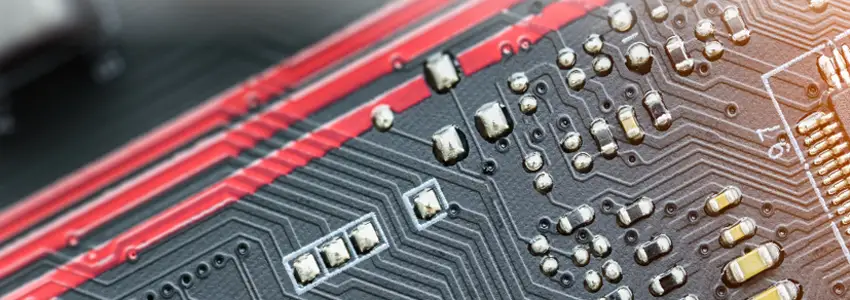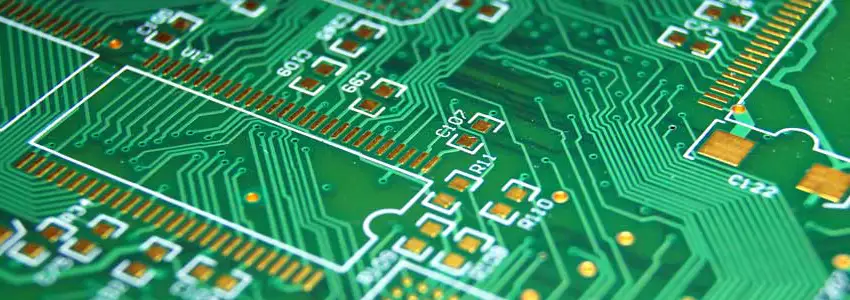- +86-0755-23597570-6067 Mon-Sun 0. 00-23. 59

In the field of consumer electronics, PCBs are widely used due to their high volume and variety. This sector encompasses a broad range of products, including domestic lighting, smart home devices, popular items like smartphones, laptops, and office computers, as well as a myriad of Internet of Things (IoT) products and wearable technology. These consumer electronic goods typically have moderate reliability standards and are developed with cost-effectiveness in mind, given their brief lifecycle. Consequently, simple, low-cost single-sided and double-sided PCBs are commonly chosen for these products. Additionally, industrial design plays a crucial role, often leading to the selection of flexible PCBs.
At Fastlink, our commitment involves collaborating closely with customers and contract manufacturers to provide high-quality PCBs for their devices. We enforce strict quality control protocols to guarantee the safety and dependability of devices using our PCBs. Our services include rapid prototyping and affordable solutions tailored to meet the specific needs of consumer electronics PCBs.
PCBs are ubiquitous in our daily lives, present in nearly every electronic device we use, including microwaves, mobile phones, computers, and televisions. Their design and complexity vary depending on their application. Here are the different types of printed circuit boards and their applications.
Single-sided PCBs feature a singular layer of conductive material, typically copper, on one side. The other side is utilized to mount various electronic components. These boards are straightforward to produce in bulk due to their simplicity in design. Despite their basic structure, they are integral to numerous complex devices, including calculators, radio and stereo systems, and printers.
Double-sided PCBs have conductive layers on both sides, allowing for denser circuitry. This design is advantageous for intermediate complexity circuits, such as LED lighting, vending machines, and industrial control systems. Through-hole technology is employed to connect circuits on either side, enhancing the functionality of these boards.
Multi-layer PCBs consist of three or more layers, laminated and compressed under high temperatures. This intricate design leads to a compact size with a high density of assembly, offering enhanced flexibility and capacity. These PCBs are prevalent in advanced electronic devices like computers, GPS systems, and satellite technology.
Rigid PCBs are characterized by their inflexibility, made from a solid substrate material. These boards maintain their shape throughout their lifespan and are commonly used in applications requiring a defined, unchanging shape. Rigid PCBs, which can be single-sided, double-sided, or multi-layered, are found in various devices such as GPS equipment, mobile phones, tablets, X-rays, and heart monitors.
In contrast to rigid PCBs, flexible PCBs are designed to bend and flex. These are typically mounted on pliable plastic substrates. Their thin and lightweight nature makes them ideal for small spaces and complex shapes. Flexible PCBs are cost-effective due to their reduced material and packaging needs. They are widely used in computer hard drives, automotive electronics (like anti-lock braking systems), and smartphones.
Rigid-flex PCBs combine the properties of both rigid and flexible PCBs. These hybrid boards are foldable and can flex continuously. With a thinner design, they are perfect for products where space and weight are limiting factors. You’ll find rigid-flex PCBs in compact and lightweight devices such as pacemakers, digital cameras, and smartphones.

PCBs are critical in various consumer-grade electronics, fulfilling numerous functions. Let’s delve into some common examples:
● Television Sets: Modern flat-screen TVs, particularly LCD and LED models, rely on multiple PCBs. These boards manage functions like power supply, input/output operations, audio processing, display driving, and more.
● Computers and Laptops: Essential components like motherboards, graphics and sound cards, and network interfaces in computers and laptops are built on PCBs.
● Mobile Phones: Every circuit in mobile phones, from the main system board to the charging circuit, display drivers, and antenna boards, is constructed on a PCB.
● Cameras: Consumer digital and video cameras use PCBs for image processing, storage, shutter control, flash operations, autofocus, display drivers, and power management.
● Audio Equipment: Home stereo systems, speakers, and headphones utilize PCBs for audio amplification circuits, input/output control, and power supply systems.
● Gaming Consoles: Devices like PlayStation, Xbox, and Nintendo Switch contain PCBs that connect central processing units, graphics processors, game cartridge/disc drive interfaces, and support wireless/Bluetooth connectivity.
● Household Appliances: In small appliances such as microwaves, blenders, vacuum cleaners, and coffee machines, PCBs are used for electronic controls, timers, and power circuitry.
Manufacturing PCBs for high-end consumer electronics presents unique challenges, distinct from those in mid and low-end markets. High-end products require precise and robust PCB materials and manufacturing techniques.
● Complex Inner Layer Wiring: The demand for intricate inner layer wiring and precise pattern size is escalating. This complexity is heightened by the presence of numerous impedance signal lines within the inner layer. Maintaining the integrity of these lines necessitates precise control over their width and spacing, often around 3 mils or smaller.
● Layer Multiplication and Alignment: As the number of layers in these boards increases, so does the challenge of aligning them accurately. Additionally, the use of thin core boards, which are prone to wrinkling, adds to the manufacturing complexity and costs.
Films used in PCBs are susceptible to expansion and shrinkage due to workshop temperature and humidity variations. This behavior mirrors in the boards themselves, complicating the alignment accuracy between inner layers.
The lamination process, involving the stacking of multiple boards and prepreg materials (PP), is prone to issues such as delamination, sliding, and steam drum residue. When dealing with many layers, inconsistencies in expansion, shrinkage control, and size coefficient compensation become evident. Moreover, thin interlayer insulating layers can lead to interlayer reliability test failures.
● Drilling Complications: Different materials result in varied roughness of drilling holes, complicating the removal of glue residue. High-density multilayer boards, characterized by high hole density, exhibit lower production efficiency and a greater risk of tool breakage.
● CAF Effect Risk: The proximity of holes in high-density boards can lead to the Conductive Anodic Filament (CAF) effect, posing a significant problem in maintaining PCB integrity.
Our design, manufacturing, and assembly capabilities enable us to handle complex printed circuit board projects with ease. We take pride in these capabilities, which have established us as a trusted and preferred manufacturer of consumer electronics PCBs.
● Multilayer Manufacturing: We manufacture different multilayer circuit boards, from 1 to 36+ layers, catering to various complexities in PCB design.
● Diverse Finishing Techniques: Our finishing capabilities include HASL, immersion silver, and lead-free options such as HASL + Gold fingers, OSP, and ENIG gold.
● Advanced Component Handling: We are adept at working with leadless chip carriers, BGA with pitches as fine as 12 Mil, both single and double-sided BGAs, and ultra-fine pitch QFP, FCP, and 0201 placement & repair, along with QFN and CSP.
● Assembly Services: We offer comprehensive assembly services, including Surface Mount Assembly, Through-hole assembly, both single- and double-sided SMT assembly, and mixed SMT.
● Inspection and Quality Control: Utilizing X-ray inspection and Automated Optical Inspection (AOI), we ensure the highest standards of quality control.
● Controlled Manufacturing Environment: Our production facilities are air-conditioned and static-free, providing an optimal environment for PCB manufacturing.
● Flexibility in PCB Types: We are equipped to assemble a variety of PCBs, including rigid, flex, and multi-layer PCBs.
● Material Selection: A variety of materials are available, including Rogers, FR-4, Teflon, Nelco, etc., to meet diverse PCB requirements.
● Capacity for Large Scale Assembly: Our facilities are geared for large-scale PCB assembly, handling substantial volumes with efficiency.
● Lead-Free and Quick Turn Assembly: We specialize in lead-free and quick turn PCB assembly, addressing the modern needs of the electronics industry.
Fastlink is one of the leading printed circuit board manufacturers in China. We understand the needs of our customers and provide customized PCB designs. Our cutting-edge facility and robust capabilities enable us to deliver reliable PCBs that ensure optimal performance for your electronic devices. If you have any purchasing needs, please don’t hesitate to contact us.